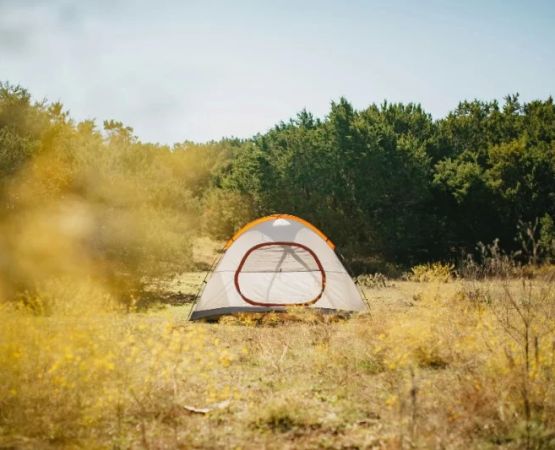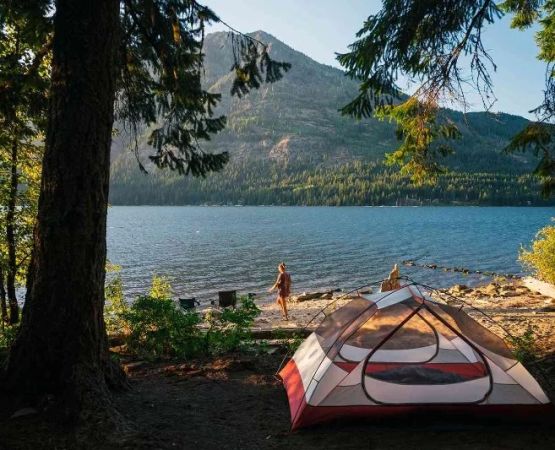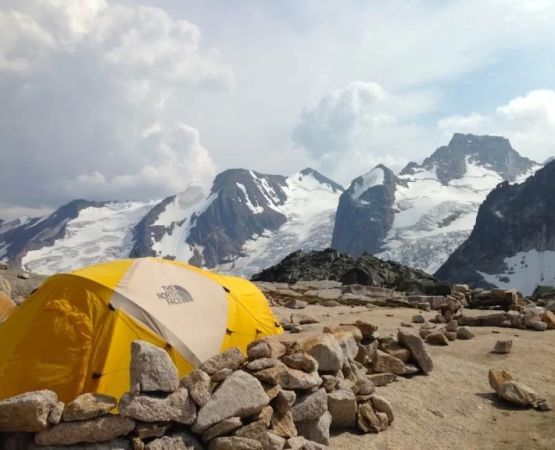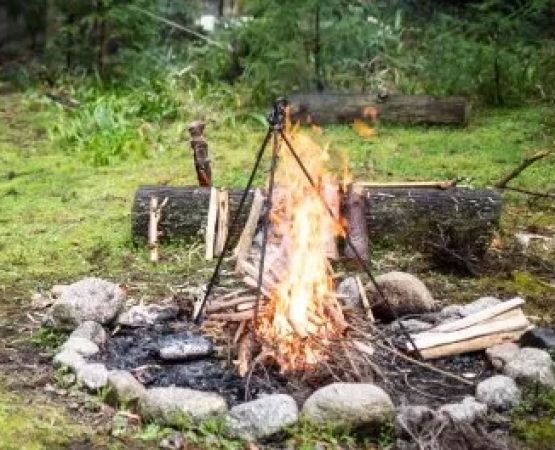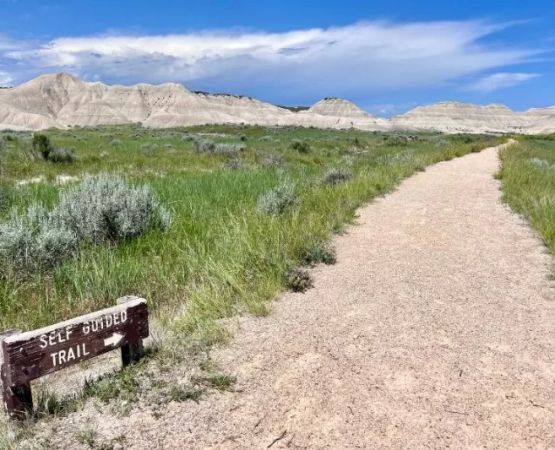- 1-Understanding-Eroded-Ridge-Overlooks-#understanding-eroded-ridge-overlooks
- 2-Choosing-a-Safe-Campsite-Near-Ridges-#choosing-a-safe-campsite-near-ridges
- 3-Weather-Wildlife-and-Environmental-Factors-#weather-wildlife-and-environmental-factors
- 4-Practical-Gear-and-Setup-Tips-#practical-gear-and-setup-tips
- 5-Real-Experiences-from-Ridge-Campers-#real-experiences-from-ridge-campers
- 6-Responsible-Stewardship-Near-Eroded-Landforms-#responsible-stewardship-near-eroded-landforms
Understanding Eroded Ridge Overlooks
Camping near eroded ridge overlooks can be one of the most breathtaking outdoor experiences in the United States. These high, wind-sculpted earth formations offer panoramic views that look like something pulled from an old explorer’s journal. However, erosion itself means the landscape is fragile. When wind, water, and time chip away at the soil structure, ridges become more delicate than they appear. Beneath a calm sunset view, the ground may hide pockets of instability or loose sediment.
Many new campers underestimate just how subtle erosion can be. A ridge may look sturdy from a distance but can crumble under pressure when weight is applied in the wrong place. This is why many seasoned hikers and outdoor guides insist that anyone learning how to camp near eroded ridge overlooks needs more than excitement—they need informed caution. Sites like Pine Cliff Resort often emphasize pre-trip education for guests planning ridge hikes or camps, because knowing how erosion behaves can make the difference between a perfect trip and a dangerous misstep.
What erosion does to ridge stability
Erosion eats away at supporting soils. Overlooks develop fissures, soft edges, and thin walls of sediment that appear solid yet are hollowed by weather. When campers place tents too close to the lip of the overlook, they unintentionally add stress to compromised soil. This doesn’t mean you can’t enjoy ridge views; it simply means you must give the landscape the space it needs to stay healthy and safe.
Choosing a Safe Campsite Near Ridges
Finding the right place to pitch your tent is the most crucial part of camping near any eroded overlook. The key is achieving a balance: staying close enough to enjoy a dramatic sunrise, yet far enough to avoid unstable soil or contributing to the erosion process.
Assessing the land before setting up
1. Look for compact, untouched soil
Areas that show healthy vegetation or tightly packed, undisturbed dirt are safer than bald, powdery soil. When you feel the ground underfoot, it should resist your weight rather than crumble beneath it.
2. Keep a respectful distance from the edge
Experts recommend staying at least 10–15 feet away from any ridge edge—more if the soil looks sandy or fractured. The distance protects not only you but also the cliff from additional wear.
3. Examine the ground for cracks
Small cracks or dips in the surface can be warning signs of earth that has already begun shifting. If you notice these features, relocate your camp immediately. They can indicate deeper erosion patterns that aren’t visible from above.
Why elevation choice matters
Camping slightly back from the highest point is often wiser. Not only does it help maintain the natural edge, but it also offers more protection from sudden wind gusts. Ridge winds can suddenly change direction or intensity, and campers who pitch too close to the cliff sometimes wake up to a tent that shifted overnight—or worse, stakes that loosened in the wind.
Weather, Wildlife, and Environmental Factors
Ridge environments can behave unpredictably, especially in the late afternoon and early morning hours. Because overlooks are exposed on all sides, weather patterns often shift faster than in valleys or forests. Understanding these conditions will help you camp wisely and comfortably.
Wind patterns you should expect
Ridges funnel wind upward, sometimes with surprising force. A calm midday can easily turn into a gusty evening. Before setting camp, observe how the wind travels across the ridge. Tossing a handful of dry grass into the air can reveal the direction and height of the gust path—a simple but reliable trick used by many backpackers.
Wildlife considerations
Animals like mule deer, foxes, and birds of prey often frequent ridge areas. While they usually keep their distance, campers should avoid leaving food exposed. Even lightweight critters like ground squirrels can destabilize loose sediment along the edge when scurrying across cracks or fragile soil. For safety and conservation, keep food secured and avoid placing anything enticing close to the overlook.
Environmental echoes of erosion
When camping near eroded landscapes, each action has an amplified impact. Footsteps can speed erosion if placed on vulnerable soil. Dragging heavy gear can carve new depressions that worsen water flow during rain. Conscious effort to minimize disturbance will help preserve these overlooks for future visitors.
Practical Gear and Setup Tips
To make your ridge camping experience safe, comfortable, and memorable, bring gear suited to exposed terrain. Regular woodland setups often aren’t enough for open ridge conditions.
Setting up securely in open landscapes
1. Use longer stakes and guy lines
Longer stakes anchor better in sandy or partially eroded soil. Pair them with extended guy lines to stabilize your tent against unpredictable ridge winds.
2. Choose a low-profile tent
Low tents catch less wind. Dome-style tents often perform better than tall cabin styles because their curved shape helps redirect airflow.
3. Pack a lightweight ground tarp
A ground tarp protects the bottom of your tent from rough soil and also helps you detect small ridges or dips under the surface. If the tarp shifts too easily, reconsider your site selection.
Helpful habits for ridge campers
Store packs low to the ground, secure loose items, and weigh down corners of tarps with small rocks to prevent them from becoming airborne. Campers often share stories of waking up to gear that “walked away” overnight thanks to strong gusts. Little details make a big difference at high elevations.
Real Experiences from Ridge Campers
Many experienced campers say the most unforgettable outdoor moments happen near ridge overlooks—often because the environment commands a sense of humility. One traveler shared a moment from a trip through Colorado: the sky was clear at sunset, but a nighttime windstorm swept through without warning. Their tent held up only because they’d used reinforced stakes and stayed further from the cliff than they originally planned. “If we hadn’t moved back another ten feet,” they recalled, “the tent would have been flapping empty by morning.”
Another camper described an eroded ridge in Utah where loose sediment created the illusion of stability. While scouting a spot, they brushed their foot along a patch of soil only to watch it crumble down the side. That moment convinced them to camp well inland. It’s stories like these that illustrate why knowledge and respect for the terrain matter.
Responsible Stewardship Near Eroded Landforms
Staying safe is only part of ridge camping—you also want to leave the landscape in better shape than you found it. Eroded ridges are already vulnerable, and even small impacts accelerate degradation.
How to camp responsibly
1. Stay on durable surfaces
Grass patches, gravel beds, or hardened soil areas are the best places to pitch camp. These surfaces resist erosion better and maintain their structure longer.
2. Minimize repetitive foot traffic
Choose a walking route to your camp and stick to it. Multiple paths across soft ridge soil quickly carve new erosion channels.
3. Avoid digging or modifying the land
Some campers try to “level” ground by digging small trenches or shifting soil, but on a ridge this can accelerate erosion dramatically. Instead, adjust your sleeping setup rather than the terrain.
A good final reminder
If you’re planning a ridge camping trip and want expert guidance, many outdoor-friendly destinations—including Pine Cliff Resort—offer helpful resources, local knowledge, and gear recommendations tailored for fragile landscapes. The more informed you are before you go, the more you’ll enjoy the experience while helping to protect these remarkable natural overlooks.

